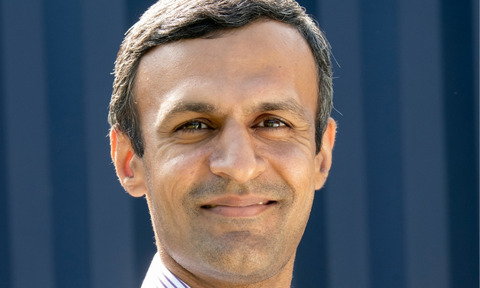Tech brings environmentalism and effectiveness to micropollutant fight
15 May 2019

Technological advances have paved the way for environmentally-friendly and increasingly effective water treatment solutions to micropollutants, outlines Mikael Khan of Arvia Technology
Micropollutants entering water supplies is a pervasive problem which by nature has no single solution.
The vast numbers of ways micropollutants can enter the environment make the magnitude of the issue even greater, as exposure can be caused by everything from incorrect disposal of cosmetics through to the over-subscription of antibiotics.
In relation to industries such as oil and gas, chemical and pharmaceutical - effectively treating wastewater before discharge can help to stop dangerous micropollutants entering the environment.
However, although traditional wastewater treatment processes can partly remove micropollutants, some traces will still be detectable in effluents.
The level of contaminants present in wastewater is gauged by the Chemical Oxygen Demand (COD), which measures organic pollutants in water as milligrams per litre (mg/L) or parts per million (ppm).
Current regulations stipulate strict limits of COD for water to be discharged to sewers or the environment, and failure to comply with regulation can result in a loss of permit, operational downtime, limited production volume and severe fines.
Primary and secondary treatment removes around 75-85% of the COD, but the hard-to-treat COD remains. Typically, legislation for COD discharge is set at below 120ppm in the EU.
Many tertiary wastewater treatment processes such as ozone, hydrogen peroxide and fentons use large doses of chemicals to eradicate trace level compounds.
It is now possible to remove part per million to part per billion levels of micropollutants which traditional systems fail to treat
Not only does chemical dosing come at a high operating price, it also produces a toxic sludge which requires transportation and specialist secondary treatment. The toxic sludge then has to be incinerated, which is equally as damaging to the environment.
This has created a demand for more economical and environmentally-friendly solutions, as in most cases, these processes are not sustainable long-term options.
The good news is that technology is rapidly advancing in this area. There are now state of the art solutions for the reduction of hard-to-treat contaminants from water and wastewater streams.
Advances in technology mean that it is now possible to remove part per million to part per billion levels of micropollutants which traditional systems fail to treat.
Arvia’s Nyex systems combine adsorption with electrochemical oxidation to provide an alternative solution to treat water without chemical dosing or the production of secondary waste. Organic compounds are selectively targeted, adsorbed and oxidised, leaving the wastewater stream safe and compliant for discharge to the sewer, the environment or reuse.
Conveniently, the system capable of effecting these changes can be easily integrated into an existing treatment train, requiring minimal manpower and maintenance. Rather than treating the whole body of water, organisations can now be more selective, targeting the problematic compounds with lower operating costs.
Not only does effective wastewater treatment reduce damage to the environment, it can also save companies thousands, as water which was previously discharged is now clean enough to be re-used.
It is abundantly clear that the pollution of waterways through incorrect wastewater treatment is a legacy issue which is often glossed over. However, with the current proliferation of environmentally-friendly technology, the time for apathy is past.
Dr.Mikael Khan is director of technology at Arvia Technology

